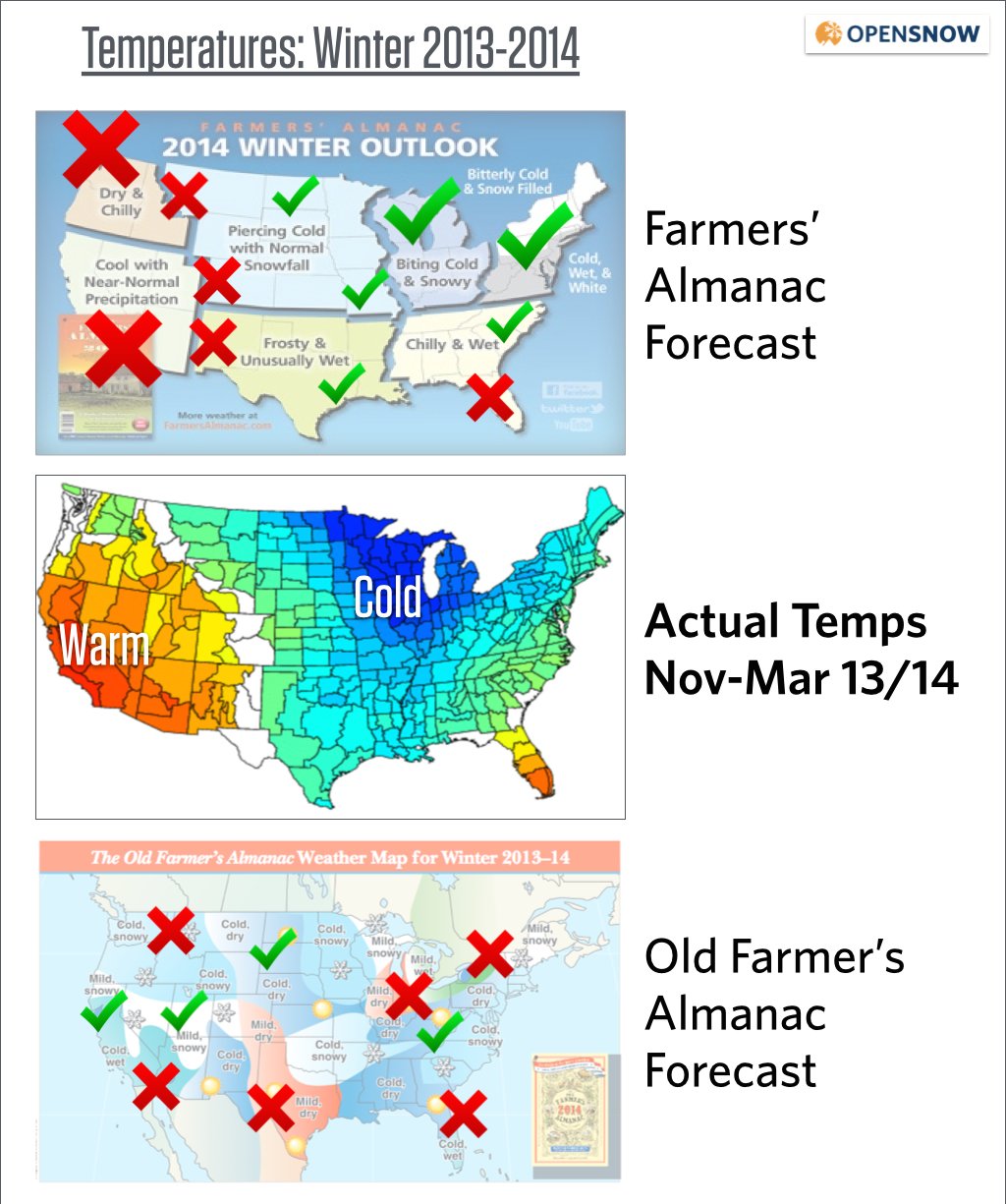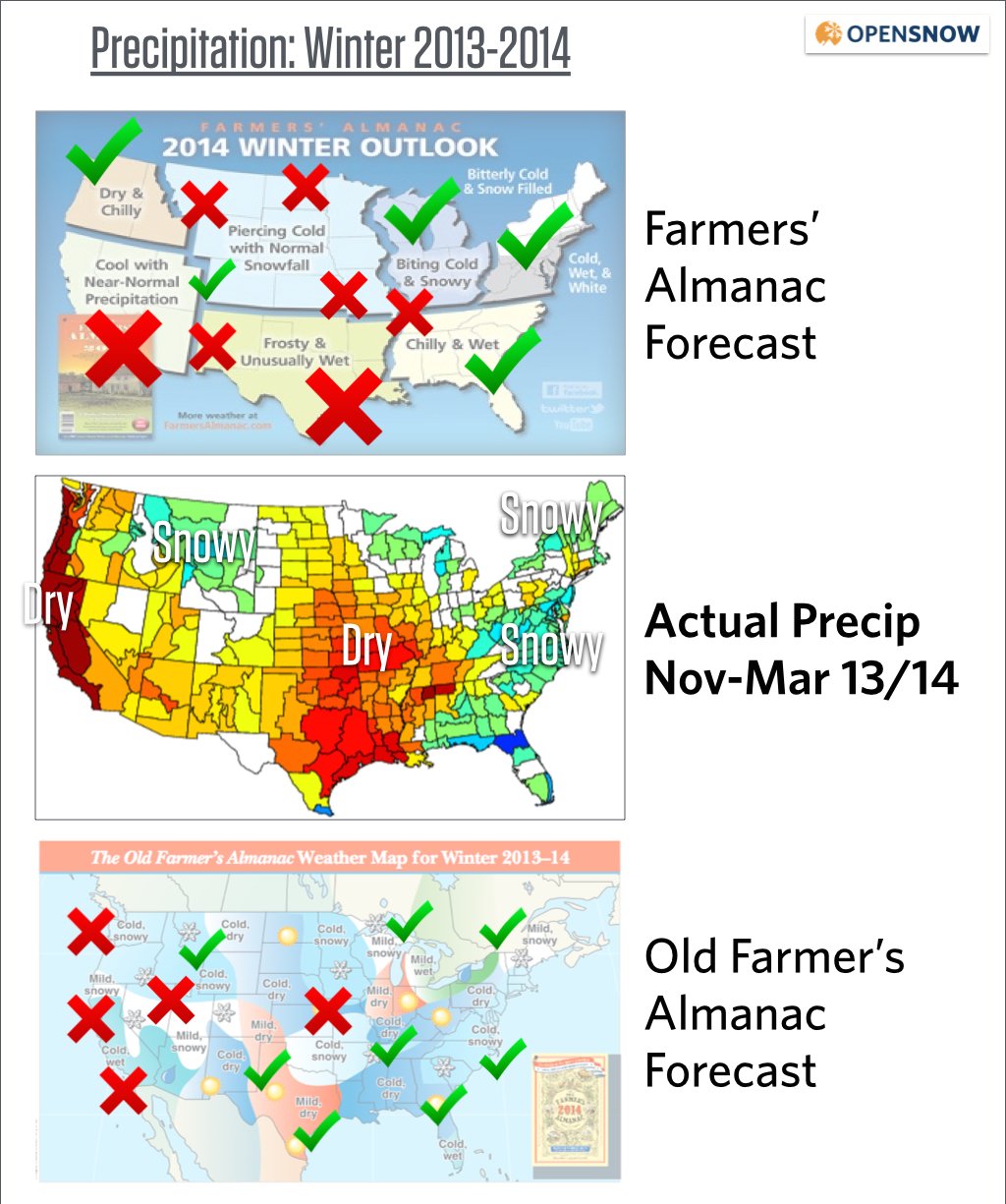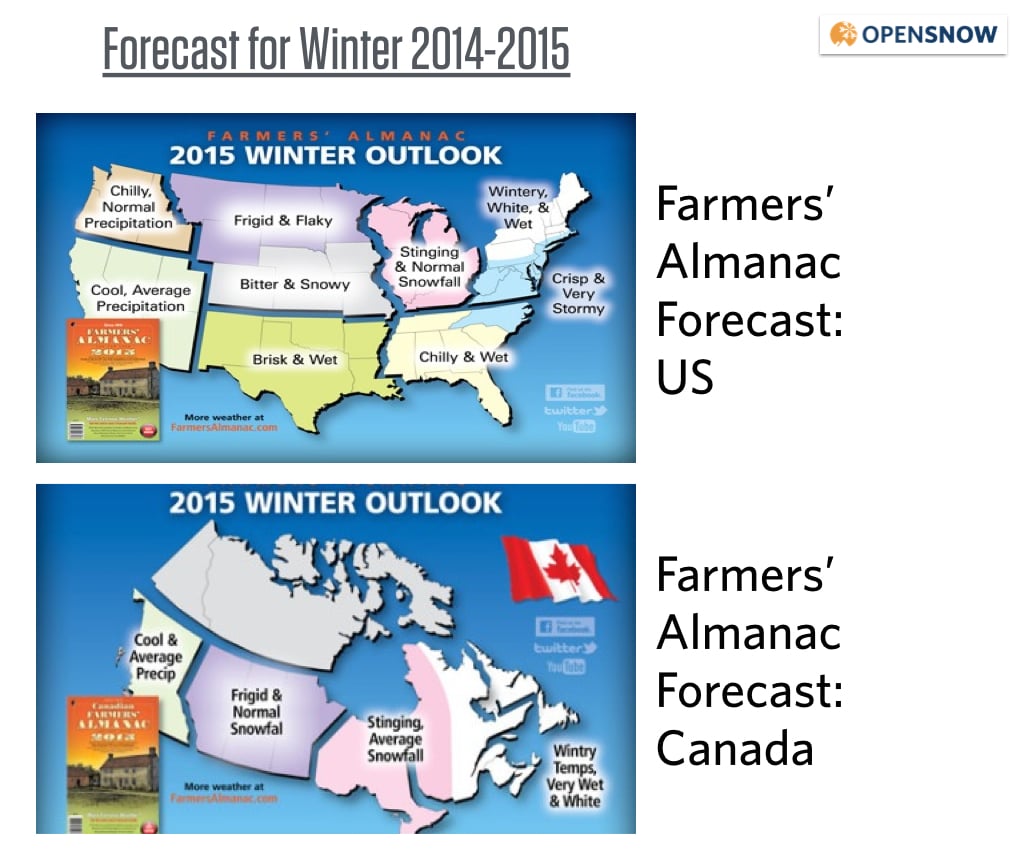News

By Joel Gratz, Founding Meteorologist Posted 9 years ago September 2, 2014
Should we trust the Farmer's Almanac
Instead of blindly trusting (or not trusting) the Farmer’s Almanac winter forecasts, shouldn’t we first look back and see how they performed last year? At the very least this will help us know if they have a track record of accuracy or a track record of baloney.
Before getting into the graphics, one quick note. During this analysis, I found out that there is not one but two Farmer’s Almanacs. The “Old Farmer’s Almanac” was started in 1792 while the “Farmer’s Almanac” begin publishing in 1818. In the spirit of completeness, let’s look at how both of them faired last season.
Now to the maps!
First, here are the forecasts from both Almanacs for the 2013-2014 winter compared to the actual temperatures recorded between November 2013 and March 2014.

Comparison of the forecast temperatures vs actual temperatures during the 2013-2014 winter. I placed a red X where the forecast was wrong and a green check mark where the forecast was correct.
The Farmers’ Almanac (top image) is relatively easy to verify since it breaks up the US into simple regions. They were incorrect across most of the west where they predicted cool temperatures while most locations were warmer than average. However, they did a pretty good job of predicting temperatures in the east.
The Old Farmer’s Almanac forecast map (bottom image) is like a smorgasbord, so it’s hard to find any patterns of right and wrong. They hit the temperatures correctly in some spots, but missed badly in others, like the northwest and over Texas.
Overall, neither Almanac offered consistently accurate temperature predictions last winter for the US. There are about the same number of red X’s and green check marks on each map.
Now, here are the forecasts from both Almanacs for precipitation (snow) last winter.

Comparison of the forecast precipitation vs actual snow/rain during the 2013-2014 winter. I placed a red X where the forecast was wrong and a green check mark where the forecast was correct.
Both Almanacs were wrong about California as it was very dry compared to forecasts of “snowy” and “near-normal precipitation”. In the east, both Almanacs did a pretty good job of predicting a snowy winter, but both missed the dry weather in the midwest and parts of the west.
Overall, neither Almanac offered consistently accurate precipitation predictions last winter for the US, and missing the continued drought in California is a glaring error.
In Canada, last winter’s temperatures were very cold over the eastern 2/3rds of the country and precipitation was about average for most areas.. The Farmer’s Almanac was accurate in predicting cold temperatures across the east while the Old Farmer’s Almanac was wrong about temperatures as it predicted above-average readings for the eastern part of the country. And neither Almanac was correct about snowfall. Whoops!
Here’s one more look-back before seeing what the Almanacs say about this season.
During this summer (June-August, 2014), both Almanacs predicted very hot weather for most of the US, and this was wrong as most locations have seen close to average temperatures with the central part of the country coming in a bit cooler than normal. Again, not a good forecast.
So what does all of this mean?
Since I see no track record of accuracy from the forecasts produced by the Farmers’ Almanac and the Old Farmer’s Almanac, I have zero confidence in their forecasts for the upcoming winter.

Farmers’ Almanac forecasts for the upcoming winter (US and Canada).
If you like these types of maps and holding weather organizations accountable for their long-range predictions, check out meteorologist Jan Null’s website (links on middle-right of the page). He presents many historical forecasts from the Old Farmer’s Almanac and compares them with the weather that actually occurred.
Thanks for reading and for not putting too much faith in seasonal outlooks! We’re only two months away from tossing any seasonal forecasts to the side and focusing on the consistently accurate forecasts inside of 5 days.
JOEL GRATZ
About The Author





